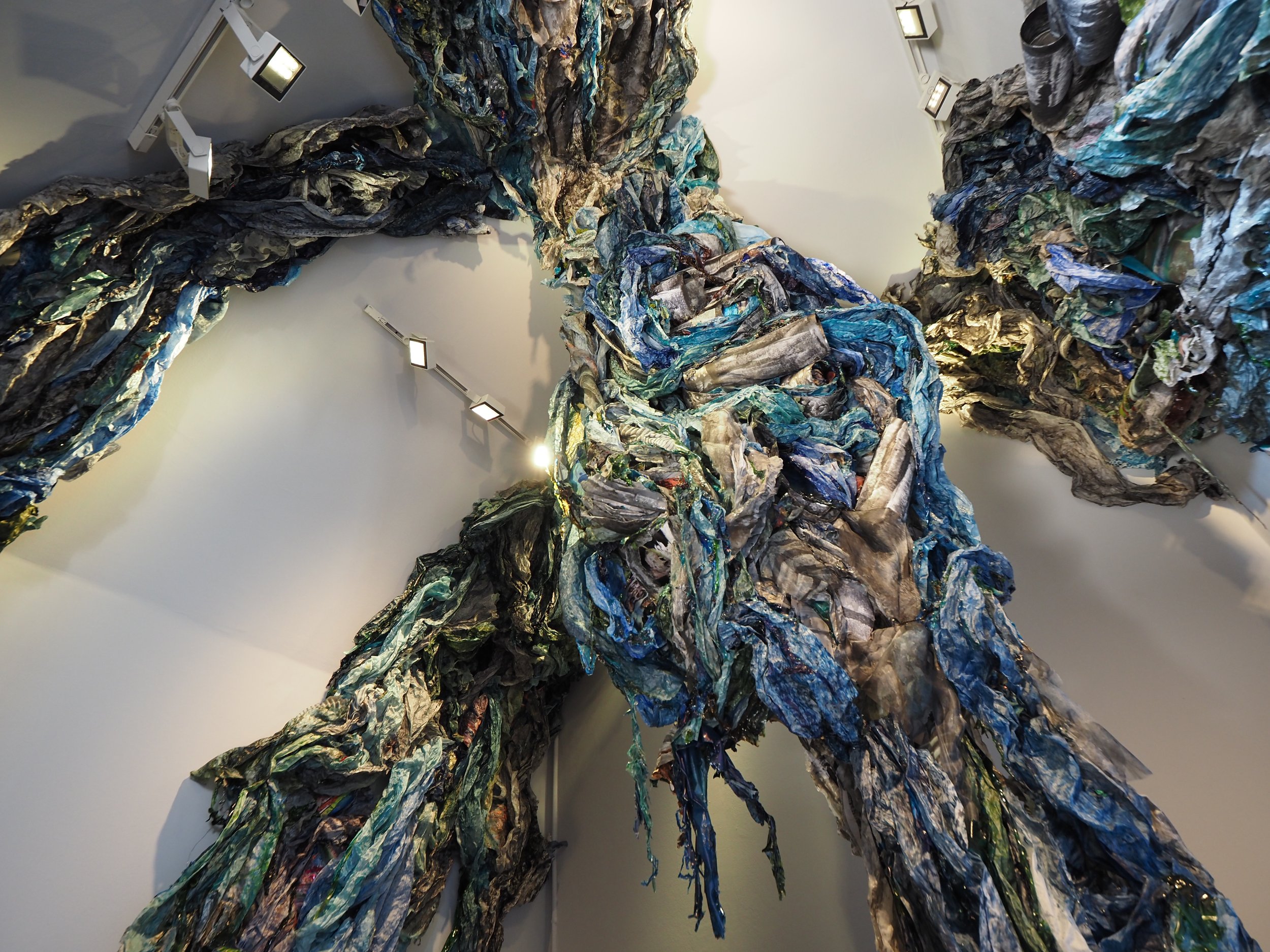Inversion
"Inversion" at Palazzo Mora in Venice is a site-specific installation made of repurposed material coalesced into dense, highly textured, and layered clusters spilling from the tall ceiling, suspended in midair, and flowing down the curved walls to create a topsy turvy landscape, a hybrid environment which blurs the lines between real and imagined, organic and artificial, landscape and topography. The translucent blue, green, and gray clusters, peppered with sporadic bursts of Venetian red, are based on source-materials referencing the Venetian Lagoon, ranging from topographic maps and satellite imagery to marine organisms. Yaniv drew from bathymetric maps of the seafloor, provided by researcher Fantina Madricardo (ISMAR), showing where human action actively modified the bottom of the Venice Lagoon. New morphologies emerge as the tidal system reacts to human intervention—infrastructure such as cables and pipes, cruise-ship propeller grooves on the lagoon floor, debris, and marine macro-litter on the Grand Canal seafloor. In addition, Yaniv also drew on photographs documenting the rising sea-levels in Venice, especially images depicting submersed water stairs and wooden piles covered with algae, provided by researcher Chiara Bertolin (NTNU).
Fig. 1 The Venice Lagoon and the bathymetry of the Scanello Channel (DTM Resolution of 0.05m and 5 times of vertical exaggeration). Background pictures: data available from the U.S. Geological Survey.
Samples of references for living organism in the Venice lagoon
Preparatory paintings based on satellite imagery
Curvy and intimate in scale, the unique architecture of the room on the third floor of Palazzo Mora, prompted the artist to build a one-to-one replica of the space in her studio. Her starting point was the ceiling, both as a tribute to the history of ceiling paintings in the palazzos and as an immediate response to the architecture. Since she began working on the installation in that replicated space, the Covid pandemic broke out and the sense of closure, isolation, vulnerability of life, and shifted perception of time and place during that period seeped into the inverted enclosed world depicted in this installation. Throughout this visceral installation, made of hundreds recycled material pieces from Yaniv’s daily life as well as paintings, drawings, and photographs, the artist reflects on the complex intersection between water and human footprints. Yaniv’s act of layering repurposed materials, both found and recycled from her previous installation works also expresses her preoccupation with transformation and ephemerality, hinting at survival in the context of social and ecological transience.
Although the installation is made of lightweight materials, it seems from afar like an abstracted colossal, inverted landscape and only from up close it reveals hidden narrative vignettes alluding to the Venetian Lagoon and its inhabitants. Like encoded messages excavated from an archeological site or geological strata, the details in each layer present new clues. The clustered dimensional structures, along with the breathing spaces and shadows in between, create an overall rhythmic flow in the space, activating walls, air, and floor into a visceral environment where the visitor is invited to walk through and observe from different perspectives. The notions of perpetual movement, shifting vantage points, and intra-connectivity between all the fragments, are equally central in Yaniv’s overall work.


















